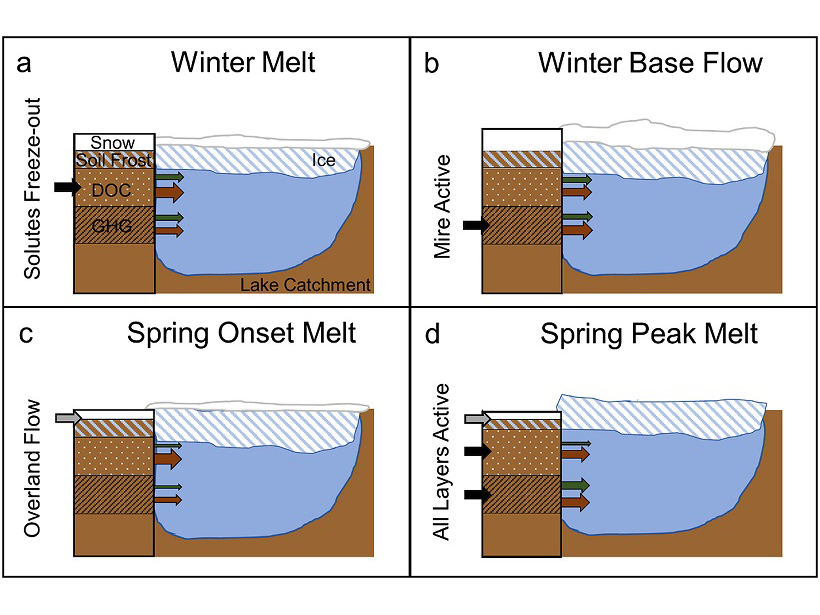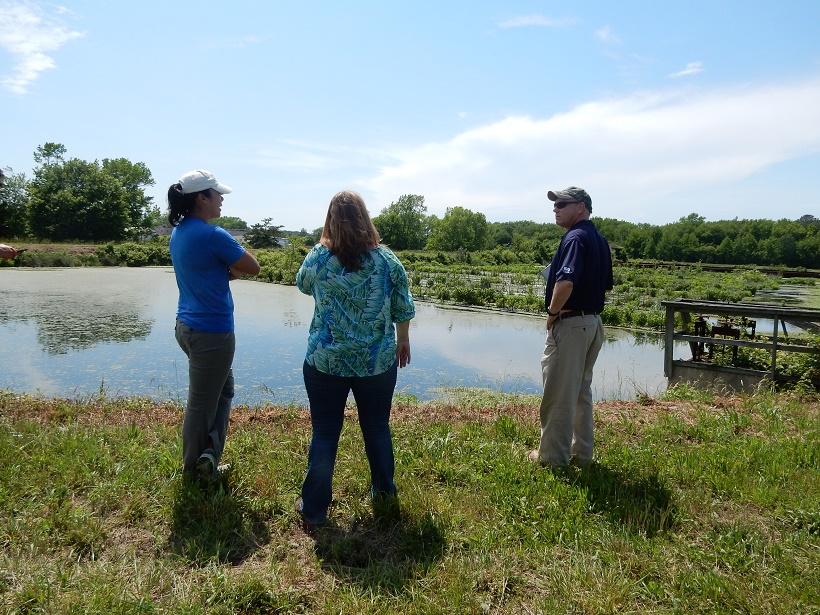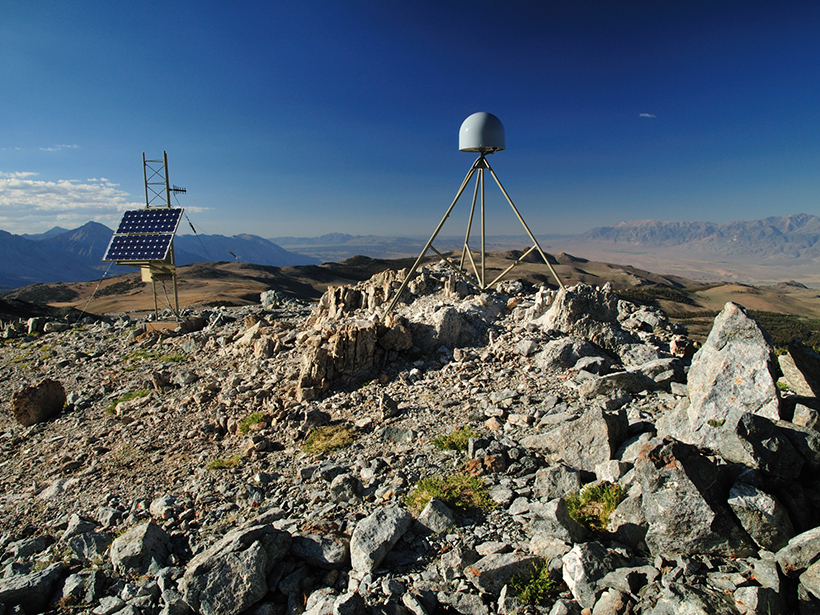Jungle-piercing lidar surveys over ancient Maya sites give scientists the most extensive maps of lowland Maya civilization to date.
CC BY-NC-ND 2018
Equatorial Ionospheric Scintillation During Daytime
Scintillation—flickers and distortions in radio waves passing through the ionosphere—can happen during daytime and at much lower dip latitudes than previously thought.
What Lies and Waits Beneath Lake Ice?
Rarely made detailed measurements of carbon dioxide and methane under lake ice reveal a story more complex than simple models of gas buildup, with surprising findings for climate change impacts.
Congressional Hearing Tackles Illegal Fishing
Illegal, unregulated, and underreported fishing worldwide could account for more than $36.4 billion annually. Where do efforts to curb it stand?
John T. “Jack” Gosling (1938–2018)
This prolific researcher helped us understand the interactions of the solar wind and coronal mass ejections with Earth’s magnetic field.
Yellow Detritus in the Oceans May Help Reduce Warming
Dissolved organic matter in the oceans absorbs light near the water’s surface, leading to cooler waters that may help mitigate regional climate warming.
New Exoplanet Telescope Detects Its First Two Planets
The two possible planets, each larger than Earth and too hot to be habitable, are the first of hundreds of Earth-sized exoplanets expected to be discovered by a recently launched telescope.
Expanding Recognition for Contributions of Science to Society
Scientists who engage with policy-makers, the public, community leaders, and the media deserve to be recognized and rewarded for their work.
How Well Can the Webb Telescope Detect Signs of Exoplanet Life?
Recent research suggests that NASA’s next-generation space telescope will be good—but not the best—at finding life-sustaining levels of oxygen in an exoplanet’s atmosphere.
Harnessing the GPS Data Explosion for Interdisciplinary Science
More GPS stations, faster data delivery, and better data processing provide an abundance of information for all kinds of Earth scientists.










